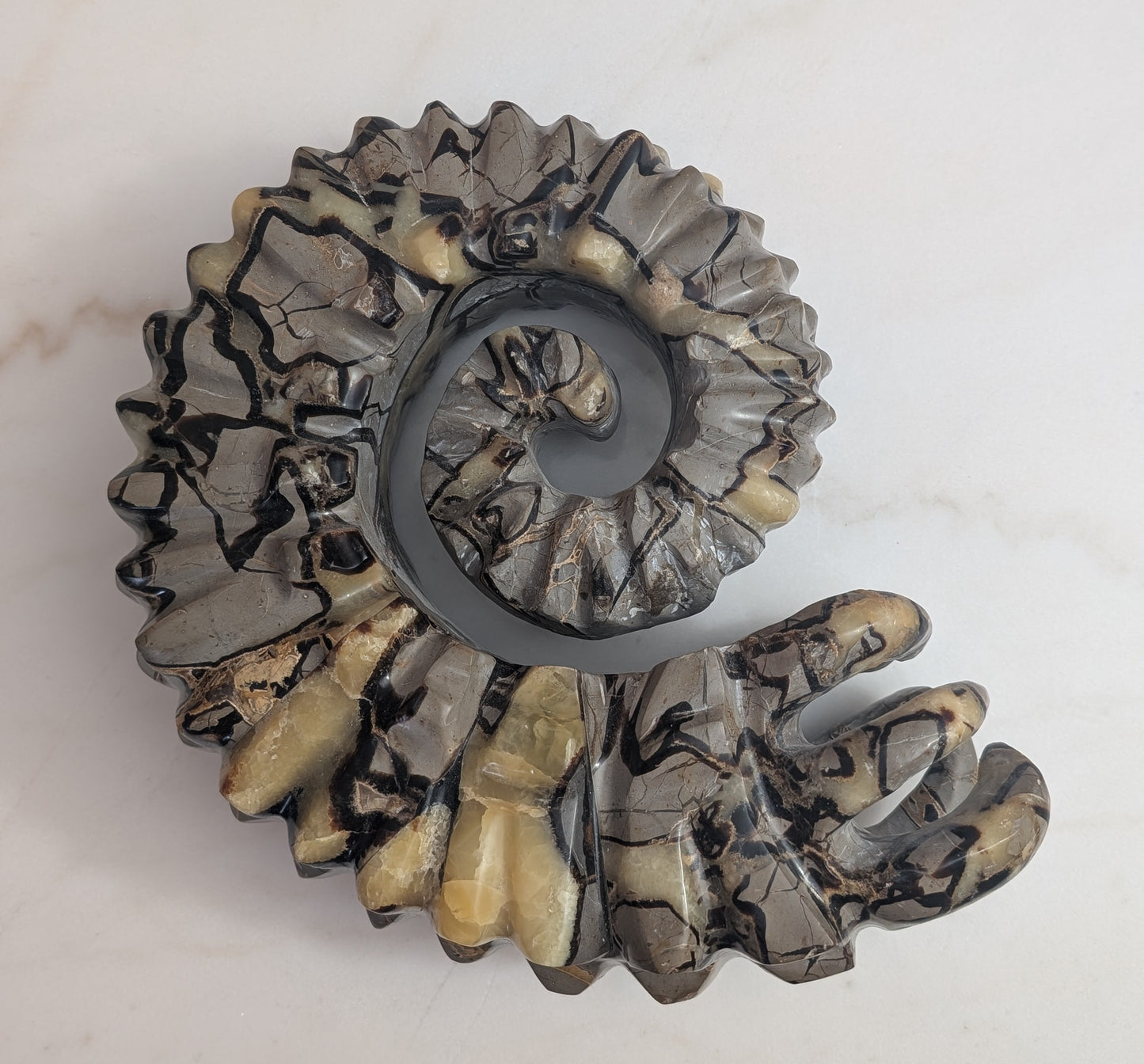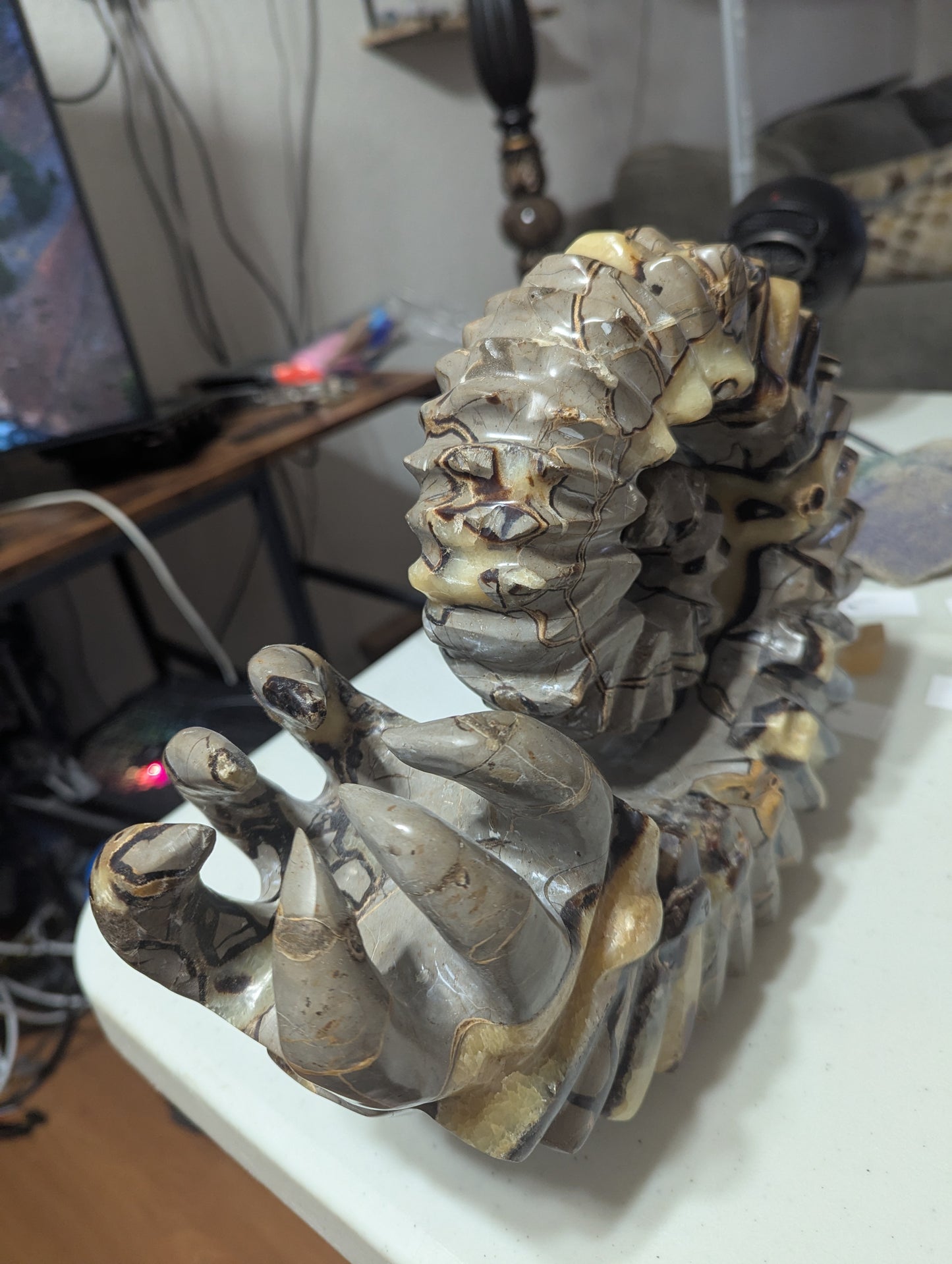Auglocqnuk
Septarian "Facehugger" Carving
Septarian "Facehugger" Carving
Couldn't load pickup availability
This carving is 10 inches tall, 4.5 inches wide, and 11 inches deep. It weighs 16.1 pounds.
--
Septarian nodules form through a complex geological process that begins during the Cretaceous period, approximately 145 to 66 million years ago, around the time of the dinosaurs' extinction. The formation starts with the accumulation of sediment, often around a nucleus such as a fossilized shell or organic matter, in shallow marine environments or coastal mudflats. This process involves the creation of a concretion, a self-contained, cemented body of sediment, where minerals in groundwater infiltrate the sediment and gradually harden the mass. The concretion may form as a result of volcanic activity, which killed sea life and deposited their remains on the seabed, enriching the sediment with minerals.
As the oceans receded, these mud balls were exposed to the air, causing them to dry out, shrink, and crack due to dehydration and the chemical effects of minerals like bentonite. These cracks, known as septaria, are the defining feature of septarian nodules and are filled over time with minerals such as calcite, aragonite, and sometimes barite or siderite, creating the distinctive patterns seen in the stone. The yellow centers are typically formed by calcite crystals, the brown lines by aragonite, and the grey exterior by limestone or a combination of minerals. The exact mechanism behind the cracking remains debated, with theories including dehydration, gas generation, pressure from compaction, or even seismic activity. The final result is a unique, often spherical or oval-shaped concretion with a rough exterior, typically composed of chalcedony or crystalline silica, and an interior system of polygonal cracks filled with various minerals.
Share





